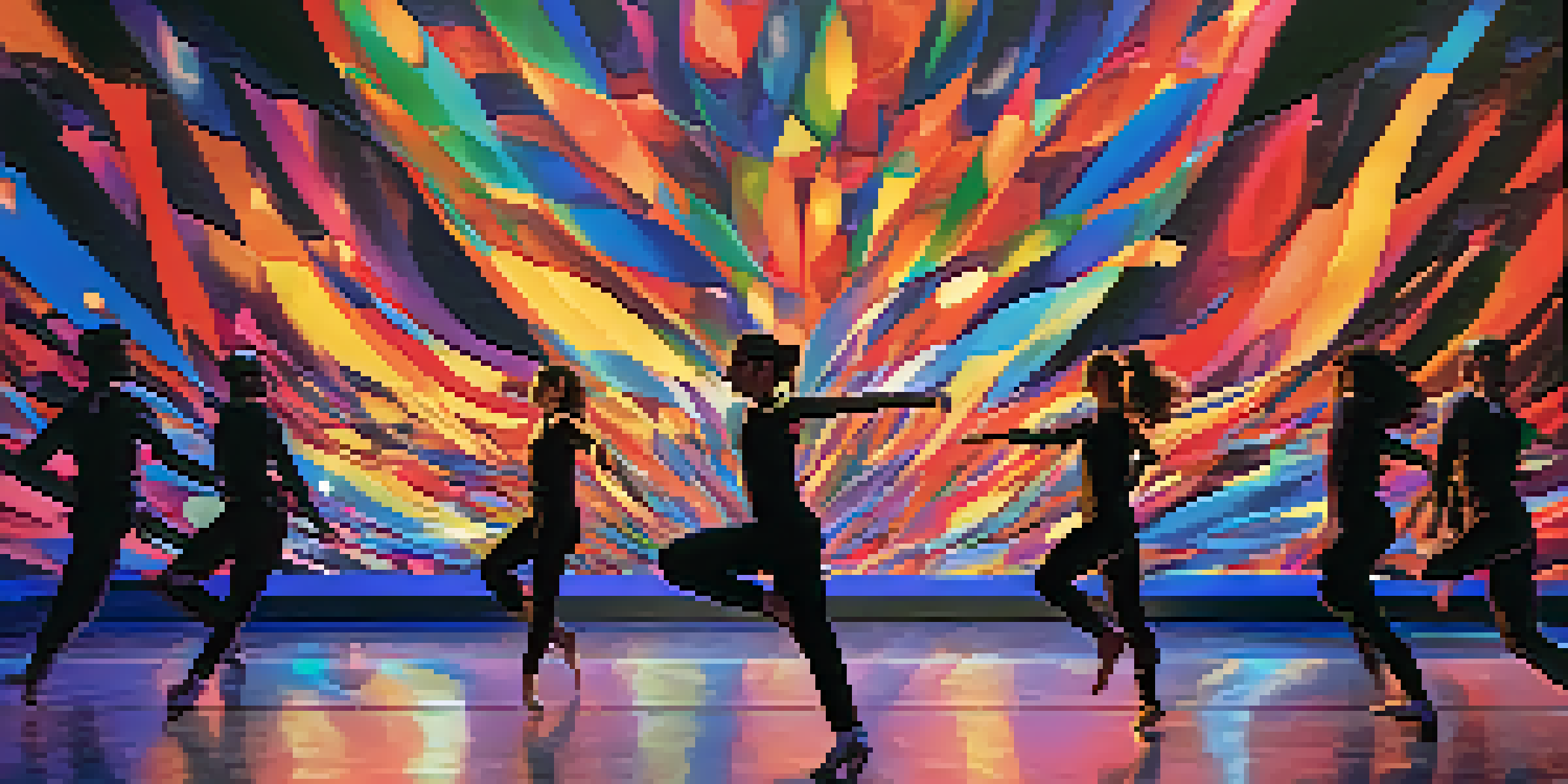Cross-Disciplinary Dance Collaborations: Beyond the Stage

What Are Cross-Disciplinary Dance Collaborations?
Cross-disciplinary dance collaborations bring together artists from various fields—like visual arts, theater, and music—to create unique performances. These collaborations often challenge traditional notions of dance, expanding its definition and impact. For example, a choreographer might work with a visual artist to incorporate dynamic projections into a dance piece, transforming the stage into an immersive experience.
The Importance of Collaboration in Art
Collaboration in the arts fosters creativity and innovation by merging different perspectives and skill sets. When artists from diverse backgrounds come together, they can create something greater than the sum of their parts. This synergy not only enriches the creative process but also appeals to a wider audience, drawing in fans from each discipline involved.
Collaboration Fuels Artistic Innovation
Cross-disciplinary collaborations merge diverse artistic perspectives, creating richer and more engaging performances.
Breaking Down Barriers: Dance Meets Technology
Technology has become a powerful tool in cross-disciplinary dance collaborations, allowing for new forms of expression. For instance, the use of virtual reality can transport audiences into a digital realm where dance interacts with simulated environments. This innovative approach not only captivates viewers but also pushes dancers to explore movement in entirely new ways.
Cultural Exchange Through Dance Collaborations
Dance collaborations often serve as a platform for cultural exchange, bringing together artists from different backgrounds to celebrate diversity. By blending various cultural traditions, these projects can create a rich tapestry of movement and storytelling. For example, a collaboration between a hip-hop dancer and a traditional Indian dancer can lead to a fascinating fusion of styles, showcasing the beauty of both cultures.
Technology Enhances Dance Expression
The integration of technology in dance allows performers to explore new forms of expression and captivates audiences.
Education and Workshops: The Collaborative Spirit
Workshops and educational programs focusing on cross-disciplinary collaboration can empower the next generation of artists. These initiatives encourage participants to step outside their comfort zones, experiment, and learn from one another. For instance, a workshop that combines dance and storytelling teaches participants how to express narratives through movement, enriching their artistic toolkit.
Real-World Examples of Successful Collaborations
Several successful cross-disciplinary collaborations have made headlines in the art world. One notable example is the partnership between choreographer Wayne McGregor and visual artist Olafur Eliasson, which resulted in a thought-provoking performance that engaged all senses. Such collaborations not only showcase the versatility of dance but also inspire other artists to experiment with their own creative boundaries.
Cultural Exchange Enriches Dance
Dance collaborations celebrate diversity by blending various cultural traditions, resulting in unique and compelling storytelling.
The Future of Cross-Disciplinary Dance Collaborations
As the art world continues to evolve, cross-disciplinary dance collaborations are set to play an even more significant role. With advances in technology and a growing appreciation for diverse art forms, the possibilities are endless. Artists are likely to explore new mediums, pushing the conventional boundaries of performance and inviting audiences to experience dance in fresh and exciting ways.
Engaging Audiences Beyond the Performance Space
Cross-disciplinary collaborations not only create captivating performances but also engage audiences in unique ways. By incorporating elements like interactive installations or community events, artists can foster a deeper connection with their viewers. This engagement extends the impact of dance beyond the stage, inviting audiences to become active participants in the creative process.